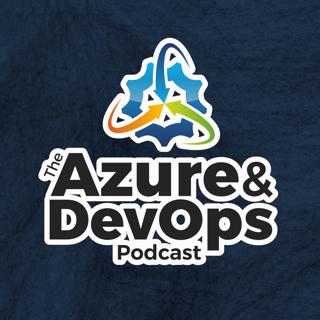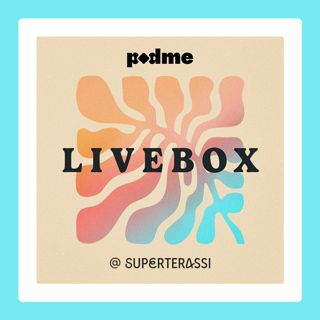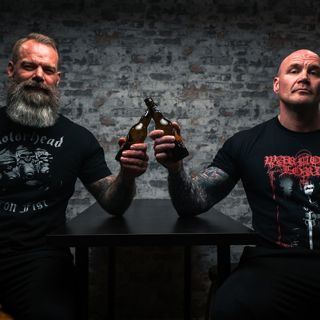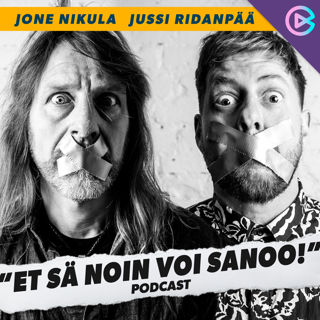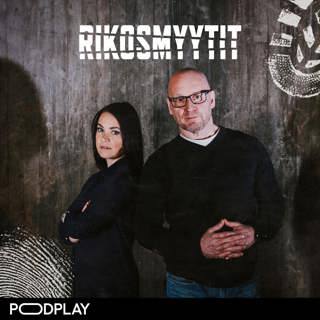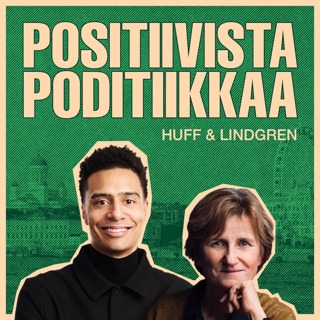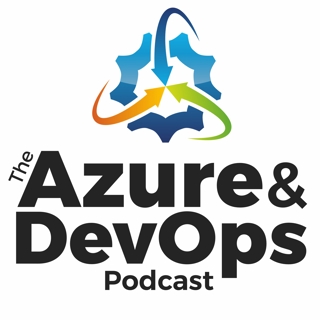
Daniel Markham on Teaching Programmers - Episode 107
In this episode, Jeffrey Palermo is joined by Daniel Markham! Daniel is a semioticist logician (otherwise known as a programmer). He likes to help people learn to make better tech. He believes that once you know the ‘why,’ you can figure out the ‘what’ on your own. As an active coder and manager, Daniel has spent time the last several years with clients as an Agile/XP Technical Coach, helping them rediscover how to discover and create value at speed. His clients include several Fortune 100 companies all over North America. He is also a technical coach and the author of Info-Ops and Info-Ops ll. In their conversation today, David and Jeffrey discuss changes in technology, what modern training for programmers new to the industry should look like, and various trends. David shares about the importance of ‘good enough’ programming, measuring the quality of your work, what it really means to ‘finish,’ and how test-driven development should be done. He also discusses key insights around TDD and infrastructure, what should be accomplished at varying team sizes, patterns he has seen over the course of his career, and his predictions for the future of the industry. Topics of Discussion: [:38] Be sure to visit AzureDevOps.Show for past episodes and show notes. [:46] About The Azure DevOps Podcast and Jeffrey’s offer to speak at virtual user groups. [1:10] About today’s episode with Daniel Markham. [1:45] Jeffrey welcomes Daniel to the podcast. [2:17] Daniel tells the story of why he originally decided to get into programming. [3:52] Daniel’s early experiences with programming. [6:00] Daniel shares about his career and important lessons he has learned throughout. [7:28] The importance of ‘good enough’ programming. [9:34] Daniel speaks about another important practice: measuring the quality of your work. [10:39] What does it mean to ‘finish’ and be able to walk away from a program? [14:06] Who should be doing test-driven development (TDD) and why? How does Daniel view it as an engineering practice? [15:25] A word from Azure DevOps Podcast’s sponsor: Clear Measure. [15:57] Daniel’s key insights around the relationship between TDD and infrastructure. [18:38] A rundown of EasyAM keywords and why they simplify the process. [20:12] Understanding what’s necessary to achieve the goal and not accidentally adding too much scope. [21:46] Daniel shares his views on what can or should be accomplished at varying team sizes. [24:06] Daniel discusses taking a startup app to market. [25:43] Daniel’s thoughts on how we should actually be teaching new programmers to the industry. [26:19] If Daniel was putting together a programming school, what would his approach be? [27:27] Talking Javascript. [30:30] With so many changes in technology, what does Daniel predict we’ll see in the next 10 years? [31:56] Talking WebAssembly and patterns Daniel has seen over the years. [35:40] Talking Microsoft Orleans. Mentioned in this Episode: Azure DevOps Clear Measure (Sponsor) .NET DevOps for Azure: A Developer's Guide to DevOps Architecture the Right Way, by Jeffrey Palermo — Available on Amazon! bit.ly/dotnetdevopsebook — Click here to download the .NET DevOps for Azure ebook! Jeffrey Palermo’s Youtube Jeffrey Palermo’s Twitter — Follow to stay informed about future events! The Azure DevOps Podcast’s Twitter: @AzureDevOpsShow Daniel Markham on GitHub Daniel Markham’s Twitter @DanielBMarkham EasyAM on GitHub Daniel Markham | Chessboard Join the Daniel B. Markham Community on Locals Microsoft Orleans - Virtual Actors Leanpub | Info-Ops ll by Daniel Markham Agile Coaches’ Corner Ep. 105: “Bob Martin on Agile and Extreme Programming” Vue.js Want to Learn More? Visit AzureDevOps.Show for show notes and additional episodes.
21 Syys 202037min

Steve Sanderson on Blazor - Episode 106
In today’s episode, Jeffrey Palermo is joined by Steve Sanderson! Steve is a developer at Microsoft on the ASP.NET team and the inventor of the first version of Blazor. He has worked on web technologies at Microsoft since 2010 and is the author of the popular book, Pro ASP.NET MVC Framework, as well as its various sequels. Steve also started the Knockout.js project back in 2010 (before client-side MV* was cool). In their conversation, Steve speaks about all things Blazor! He shares about the initial vision of Blazor as well as the process that led to the first production-ready version of Blazor. He answers topical questions about Blazor, WebAssembly, and Azure; shares what he is currently working on with regards to Blazor; and offers advice to new and old developers alike! Topics of Discussion: [:38] Be sure to visit AzureDevOps.Show for past episodes and show notes. [:46] About The Azure DevOps Podcast and Jeffrey’s offer to speak at virtual user groups. [1:35] About today’s episode with Steve Sanderson! [2:12] Jeffrey welcomes Steve to the podcast. [2:20] Steve shares some of his software career highlights. [4:30] Steve speaks about the work he did on the Azure Portal. [7:48] Steve shares what the initial vision for Blazor looked like as well as the process that led to the first production-ready version of Blazor. [12:16] Steve explains how Blazor is not a way of running .NET code on WebAssembly; it is a UI framework. [14:22] How (and what) Blazor, as a UI framework, is teaching new developers for the first time. [17:06] A word from Azure DevOps Podcast’s sponsor: Clear Measure. [17:38] With API security, etc. is it built-into Blazor, or, are there things that developers need to keep in mind or do on top of what’s provided by the template? [22:38] When deploying and running WebAssembly, what are the recommended services in Azure? What has Steve tested? [24:23] If a developer’s goal is to have their Blazor app talk to a few of their web API controllers, what is the minimum they need to really think about when setting that up properly in Azure? [26:12] What would the catalyst be to move to some of the Azure services around API management? [28:18] Steve speaks about what he is actively working on now and what he is aiming toward, going forward with Blazor. [34:44] How close are we to being able to take a Blazor WebAssembly app and submit it to the iOS app store? [38:04] Jeffrey thanks Steve for joining the show and Steve shares a recommendation for further learning about Blazor. Mentioned in this Episode: Azure DevOps Clear Measure (Sponsor) .NET DevOps for Azure: A Developer's Guide to DevOps Architecture the Right Way, by Jeffrey Palermo — Available on Amazon! bit.ly/dotnetdevopsebook — Click here to download the .NET DevOps for Azure ebook! Jeffrey Palermo’s Youtube Jeffrey Palermo’s Twitter — Follow to stay informed about future events! The Azure DevOps Podcast’s Twitter: @AzureDevOpsShow Steve Sanderson Pro ASP.NET MVC Framework, by Steve Sanderson Blazor.net WebAssembly Knockout.js Microsoft Azure Portal Azure Application Insights Want to Learn More? Visit AzureDevOps.Show for show notes and additional episodes.
14 Syys 202039min

Bob Martin on Agile and Extreme Programming - Episode 105
In today’s episode, Jeffrey Palermo is joined by a really exciting guest; Robert C Martin, better known as Uncle Bob Martin! If you don’t already know Bob, he is a software engineer, instructor, and best-selling author. He is most recognized for developing numerous software design principles and for being a founder of the incredibly influential Agile Manifesto. Bob is the author of a number of Clean Code related books including his latest, Clean Agile: Back to Basics, where he reintroduces Agile values and principles for a new generation of programmers and nonprogrammers alike. In the past, Bob was also the editor-in-chief of C++ Report magazine and served as the first chairman of the Agile Alliance. In this episode, Jeffrey and Bob talk all things Agile and Extreme Programming (XP). Bob shares his insights on what would be on his shortlist if he was building an Agile team today; shares key takeaways from his book, Clean Agile: Back to Basics; and speaks about what XP looks like in 2020. He also touches on clean architecture, clean code, his predictions for the future of the software industry, and offers some timely tips for young developers! Topics of Discussion: [:38] Be sure to visit AzureDevOps.Show for past episodes and show notes. [:46] About The Azure DevOps Podcast and Jeffrey’s offer to speak at virtual user groups. [1:42] About today’s episode with Bob Martin. [2:10] Jeffrey welcomes Bob to the podcast. [2:20] Bob shares some background about who he is as well as the proudest moment in his career. [4:09] Why did Bob decide to write Clean Agile: Back to Basics? [5:28] If someone was building an Agile team today, what would be on Bob’s shortlist of recommendations? [7:38] What does Extreme Programming (XP) look like in 2020? What are the concrete practices? [9:32] What does Bob see as the current best standard for a programmer in this COVID world? [12:31] Bob defines the practice of continuous integration. [14:58] Is Bob a fan of feature branches? [15:29] A word from Azure DevOps Podcast’s sponsor: Clear Measure. [16:00] Bob’s journey with getting started with clean architecture. [19:23] Is there a way to do clean architecture with the modern tooling available? Or are there things available to attempt to get closer to it? [21:32] Bob shares the origin of literate programming. [23:11] The modern struggle with tooling. [25:15] Bob talks ‘DLL Hell’. [26:00] Bob shares why it is so incredibly important to keep clean code; code that is free from dependencies. He also explains how to get to that point and offers some advice to young programmers. [31:55] Bob shares his predictions on the future of the software industry. [37:13] Jeffrey thanks Bob for joining the podcast! Mentioned in this Episode: Azure DevOps Clear Measure (Sponsor) .NET DevOps for Azure: A Developer's Guide to DevOps Architecture the Right Way, by Jeffrey Palermo — Available on Amazon! bit.ly/dotnetdevopsebook — Click here to download the .NET DevOps for Azure ebook! Jeffrey Palermo’s Youtube Jeffrey Palermo’s Twitter — Follow to stay informed about future events! The Azure DevOps Podcast’s Twitter: @AzureDevOpsShow Robert C. Martin Clean Agile: Back to Basics, by Robert C. Martin Robert C.Martin’s Amazon Book Page @UncleBobMartin (Bob Martin’s Twitter) Clean Coders Extreme Programming Explained, by Kent Beck Clean Architecture: A Craftsman's Guide to Software Structure and Design, by Robert C. Martin DLL Hell Want to Learn More? Visit AzureDevOps.Show for show notes and additional episodes.
7 Syys 202038min

Derek Comartin on Migrating to .NET Core - Episode 104
This week on the podcast, Jeffrey Palermo is virtually sitting down with Derek Comartin to discuss migrating to .NET Core! Derek Comartin is a software developer with two decades of professional software development experience. He has written software for a variety of business domains such as distribution, transportation, manufacturing, and accounting. He is also the Director of Engineering at Full Circle TMS., where he develops transportation management software using a variety of technologies, including .NET. Derek has also founded and currently leads the Windsor-Essex .NET Developers Group, where they explore the use of .NET for building and deploying applications on any platform. On top of all of this, Derek also has a very active blog (CodeOpinion.com) that focuses on CQRS, Event Sourcing, HTTP APIs, and Hypermedia. In their conversation, Derek tells his migration story and offers pro tips to other developers getting started on theirs. Topics of Discussion: [:38] Be sure to visit AzureDevOps.Show for past episodes and show notes. [:46] About The Azure DevOps Podcast and Jeffrey’s offer to speak at virtual user groups. [1:49] About today’s episode with Derek Comartin! [3:03] Jeffrey welcomes Derek to the podcast. [3:16] Derek shares some highlights of his career as well as what he’s currently up to on a daily basis. [4:38] Discussing the new generation of developers. [5:47] What makes migrating to .NET Core different? And what do developers need to think about if they’re contemplating migrating? [8:13] Derek details how they migrated their ASP.NET app to .NET Core. [9:57] Derek gives an overview of the system’s starting point in 2015. [11:32] Derek shares which .NET Framework version they migrated from. [11:55] Why they decided to do all of their prep work while on .NET Framework prior to their migration. [15:59] Derek shares about some of the dependencies that served as challenges during migration and how their team overcame them. [18:08] A word from Azure DevOps Podcast’s sponsor: Clear Measure. [18:41] Derek continues to share the route that they took with migration. [19:24] Derek shares what their hosting model was at the time vs. what it is right now. [20:15] Are they doing anything currently with Kubernetes? [20:41] About the recent Azure DevOps’ episode with Mike Sigsworth on Kubernetes implementation. [21:38] Is .NET Framework 4.8 all we’re going to get from Framework? Derek elaborates on their deployment strategy and shares some advice. [26:50] Derek explains why Noda Time should be the standard for communicating over different timezones. [30:32] What levels of test suites did Derek find to be the most helpful with migration? [32:30] Which version of .NET Core are they on now? [32:50] Will they planning a move to .NET 5.0 in a few months or are they going to wait a little while? [33:46] How much CPU, memory, or resources are they using now? [34:51] Derek shares where to find him online as well as some additional resources to check out. [35:46] Jeffrey thanks Derek for sharing his migration story! Mentioned in this Episode: Azure DevOps Clear Measure (Sponsor) .NET DevOps for Azure: A Developer's Guide to DevOps Architecture the Right Way, by Jeffrey Palermo — Available on Amazon! bit.ly/dotnetdevopsebook — Click here to download the .NET DevOps for Azure ebook! Jeffrey Palermo’s Youtube Jeffrey Palermo’s Twitter — Follow to stay informed about future events! The Azure DevOps Podcast’s Twitter: @AzureDevOpsShow Derek Comartin’s LinkedInDerek’s Twitter: WENetDevelopers Windsor-Essex .NET Developers Group Derek’s Blog: CodeOpinion.com Entity Framework Entity Framework Classic AWS Amazon ECS Kubernetes The Azure DevOps Podcast: “Mike Sigsworth on a Containerized Journey Using .NET Core - Episode 101” The .NET Portability Analyzer Dotnet/Roslyn-Analyzers Async Await Noda Time Docs.Microsoft.com Want to Learn More? Visit AzureDevOps.Show for show notes and additional episodes.
31 Elo 202036min

Daniel Vacanti on ActionableAgile - Episode 103
In today’s episode, Jeffrey Palermo sits down virtually with Daniel Vacanti, the co-founder and CEO of ActionableAgile. Daniel is a 20-year software industry veteran who got his start as a Java Developer/Architect. He has spent most of the last 15 years focusing on Lean and Agile Practices. In 2007, he helped develop the Kanban Method for knowledge work. He even managed the world’s first project implementation of Kanban that year and, ever since, has been conducting Kanban training, coaching, and consulting. As the co-founder and CEO of ActionableAgile, Daniel provides industry-leading predictive analytics tools and services for any Lean-Agile process. Daniel Vacanti shares all about how teams can optimize their software process through better forecasting and predictability. He highlights some of the major recurring lessons that he advises teams about, his recommendations for getting started with the forecasting and predicting, and tips for managers struggling to get the right results with the software process. He also shares some general advice for management and teams starting from scratch on how to get more stuff done, mitigate risk, and more! Topics of Discussion: [:38] Be sure to visit AzureDevOps.Show for past episodes and show notes. [:46] About The Azure DevOps Podcast and Jeffrey’s offer to speak at virtual user groups. [1:42] About today’s episode with Daniel Vacanti! [1:55] Jeffrey welcomes Daniel to the podcast. [2:07] Daniel shares some of the backstory of how Kanban began. [3:29] How Daniel views DevOps and why Kanban is a great fit for it. [4:17] Daniel highlights some of the major recurring lessons that he advises teams about the software process, specifically forecastability, and predictability. [8:02] For new project teams being put together, Daniel gives some recommendations with regards to getting started with the forecastability and predictability in the software process. [13:02] Daniel’s tips for managers struggling to get the right results with the software process. [15:15] A word from Azure DevOps Podcast’s sponsor: Clear Measure. [15:46] The fundamental problem with every software organization being that they have more work to do than the capacity will ever be on their team, does that mean that unless there is an intentional governor, that it’s almost guaranteed to be development gridlock? Daniel provides some recommendations on how to tackle many items/tasks through the software process. [18:57] Lessons from Kanban (especially for development managers). [21:32] Daniel’s advice for management, getting more stuff done, and mitigating risk. [25:03] Tips from wise managers. [26:48] Daniel shares his favorite start-up tips and key strategies for teams starting from scratch. [31:24] What does Daniel do to quickly determine the age of items (i.e. how long they have been in progress)? Are there tools that monitor aging for you? [33:53] Daniel speaks about how he likes to get teams started (prior to coding) with Kanban. [35:49] Jeffrey thanks Daniel for joining the podcast. [36:26] Where to find Daniel online. Mentioned in this Episode: Azure DevOps Clear Measure (Sponsor) .NET DevOps for Azure: A Developer's Guide to DevOps Architecture the Right Way, by Jeffrey Palermo — Available on Amazon! bit.ly/dotnetdevopsebook — Click here to download the .NET DevOps for Azure ebook! Jeffrey Palermo’s Youtube Jeffrey Palermo’s Twitter — Follow to stay informed about future events! The Azure DevOps Podcast’s Twitter: @AzureDevOpsShow Daniel Vacanti @DanVacanti on Twitter Email: Daniel@ActionableAgile.com ActionableAgile Kanban Thinking in Bets: Making Smarter Decisions When You Don't Have All the Facts, by Annie Duke The Lean Startup: How Today's Entrepreneurs Use Continuous Innovation to Create Radically Successful Businesses, by Eric Ries Want to Learn More? Visit AzureDevOps.Show for show notes and additional episodes.
24 Elo 202037min

Brady Gaster on SignalR and More - Episode 102
This week, Brady Gaster is joining The Azure DevOps Podcast to discuss all things SignalR and beyond. Brady is a Senior Program Manager in the ASP.NET team at Microsoft where he works on SignalR, microservices, APIs, and integration with Azure service teams in hopes to make it exciting for developers who work on .NET apps to party in the cloud! ASP.NET SignalR is a library for ASP.NET developers that makes it incredibly simple to add real-time web functionality to your applications. In this episode, Brady takes listeners on a deep dive about SignalR; sharing how it has evolved over the last year, where and how to use it, and many of the ins and outs. Beyond SignalR, Brady and Jeffrey also have discussions around OpenAPI, end-to-end, Microsoft Edge Canary, Blazor, WebAssembly, and more! This episode is jam-packed with insights, key learnings, and fascinating tidbits about what Brady has been working on in the last while! Topics of Discussion: [:38] Be sure to visit AzureDevOps.Show for past episodes and show notes. [:46] About The Azure DevOps Podcast and Jeffrey’s offer to speak at virtual user groups. [1:43] About today’s episode with Brady Gaster! [2:07] Jeffrey welcomes Brady to the podcast. [2:42] The current state of SignalR and how it has evolved over the last year. [5:05] When to use SignalR. [7:51] Brady highlights some of the things to watch out for with SignalR. [13:06] Brady shares his thoughts about Blazor. [17:10] Is Azure Applications Insights live metrics using SignalR or WebSockets? [17:39] Brady shares a couple of interesting Windows features that tie to your phone with SignalR. [20:35] Discussing streaming via SignalR. [23:11] A word from Azure DevOps Podcast’s sponsor: Clear Measure. [23:45] DevTools [25:04] Brady speaks about some interesting things that came out of Microsoft’s Hackathon. [27:29] About the .NET tool, Ripple. [28:08] What is ‘end-to-end’? [32:20] Brady shares what he has been spending most of his time on this summer. [35:02] Brady highlights the simplest, go-to combination of tools and techniques for web service authentication. [40:47] Jeffrey’s API prediction. [43:25] Brady leaves listeners with a few recommendations on furthering their learning. [44:32] Jeffrey thanks Brady for joining the show. Mentioned in this Episode: Azure DevOps Clear Measure (Sponsor) .NET DevOps for Azure: A Developer's Guide to DevOps Architecture the Right Way, by Jeffrey Palermo — Available on Amazon! bit.ly/dotnetdevopsebook — Click here to download the .NET DevOps for Azure ebook! Jeffrey Palermo’s Youtube Jeffrey Palermo’s Twitter — Follow to stay informed about future events! The Azure DevOps Podcast’s Twitter: @AzureDevOpsShow Brady Gaster’s BlogBrady Gaster’s Twitter SignalR WebSockets Dynamic Type in C# Blazor WebAssemblyAzure Application Insights ASP.NET Core SignalR .NET Client Microsoft DevTools: Experimental Features Test Web APIs with the HTTP REPL Get Started with Swashbuckle and ASP.NET Core Azure API Management Microsoft.Identity.Web on Nuget.org Microsoft Learn NET Conf 2020 Microsoft Ignite JSON Microsoft Edge Canary Channel NSwagSwagger Want to Learn More? Visit AzureDevOps.Show for show notes and additional episodes.
17 Elo 202045min

Mike Sigsworth on a Containerized Journey Using .NET Core - Episode 101
Joining Jeffrey Palermo today is Mike Sigsworth, a Principal Software Architect at Clear Measure. Mike has been developing for over 20 years (most of that in the .NET space) and an unquenchable curiosity to learn keeps him close to the cutting edge of technology. He is also incredibly passionate about board games and is an avid listener of sci-fi audiobooks! In today’s podcast, Jeffrey and Mike are talking about a huge project that Mike is working on for a client that has made some big shifts for a massively critical system. They discuss this project, how they handled migration to .NET Core, tackled containerization, broke up services into microservices, how the DevOps pipeline was pieced together, and the overall structure of the team. Mike also gives his thoughts and sheds some light on Docker, Helm, Kubernetes, NServiceBus, and more. Topics of Discussion: [:38] Be sure to visit AzureDevOps.Show for past episodes and show notes. [:46] About The Azure DevOps Podcast and Jeffrey’s offer to speak at virtual user groups. [1:55] About today’s episode with Mike Sigsworth. [2:17] Jeffrey welcomes Mike to the podcast. [2:21] Mike gives some sci-fi audiobook recommendations. [3:11] The lessons learned and challenges he (and his team) have overcome with moving from .NET Framework to .NET Core, figuring out when they need to split something out to a separate git repository, etc. [6:13] Mike gives some context, explaining the type of system it is, the shape of the environment, etc. for this client. [7:42] How big is this production environment? [8:22] Mike explains what a ‘pod’ is and how it works. [9:01] Mike shares how their environment is all in AWS. [9:40] Mike speaks about the course of the project and how it has evolved over time and some of the challenges they faced. [12:16] Talking Dapper.[14:19] Mike continues detailing the evolution of the project from moving to .NET Core, getting things running in Containers, and more. [15:28] Mike shares about a recent fun experience he had with Kubernetes and NServiceBus. [17:30] Mike gives his take on NServiceBus and whether or not he thinks it will be sticking around. [20:16] A word from Azure DevOps Podcast’s sponsor: Clear Measure. [20:44] Having fully containerized their environment, in most cases does that provide them with a zero-downtime deployment process? [24:51] With this type of system architecture, how did they piece together their DevOps pipeline? [27:50] Mike speaks about their testing surface area and how they know when something is not destabilized whenever a new Git commit comes through. [30:43] For such a massively busy system, what’s the necessary structure for the team? [32:00] Mike shares some of the indispensable go-to resources he recommends listeners to check out. [32:58] In the future when Cloud providers may have “plug and play” Container or Kubernetes services, would Mike give up some control in order to just say, “Run my stuff”? [34:13] Jeffrey thanks Mike for joining the podcast! Mentioned in this Episode: Azure DevOps Clear Measure (Sponsor) .NET DevOps for Azure: A Developer's Guide to DevOps Architecture the Right Way, by Jeffrey Palermo — Available on Amazon! bit.ly/dotnetdevopsebook — Click here to download the .NET DevOps for Azure ebook! Jeffrey Palermo’s Youtube Jeffrey Palermo’s Twitter — Follow to stay informed about future events! The Azure DevOps Podcast’s Twitter: @AzureDevOpsShow Mike Sigsworth Hyperion Cantos Dragon Masters Kubernetes NServiceBus Adobe Analytics Google Analytics Snowflake Amazon Web Services (AWS) TeamCity Octopus Deploy AWS CodeBuild GitHub Actions Docker Helm RoundhousE Want to Learn More? Visit AzureDevOps.Show for show notes and additional episodes.
10 Elo 202034min

Richard Hundhausen on Professional Scrum - Episode 100
In today’s episode, Jeffrey is joined by a good friend and incredible software engineer and trainer, Richard Hundhausen. Richard helps software organizations and teams deliver better products by understanding and leveraging Azure DevOps and Scrum. He is a Professional Scrum Trainer, Professional Scrum Developer, author of Professional Scrum with Azure DevOps (MS Press), and co-creator of the Nexus Scaled Scrum framework. As a software developer and consultant with over 30 years of experience, he understands that software is built and delivered by people and not by processes or tools. In their conversation today, Richard outlines what Scrum now looks like in 2020, what the roles look like, clears up misconceptions, offers tips to Scrum teams both new and old, and shares some advice on how Scrum teams can best adapt to changes in technology. Topics of Discussion: [:38] Be sure to visit AzureDevOps.Show for past episodes and show notes. [:46] About The Azure DevOps Podcast and Jeffrey’s offer to speak at virtual user groups. [1:30] About today’s episode with Richard Hundhausen. [2:15] Jeffrey welcomes Richard to the podcast. [2:50] Richard shares about his background and how he first got into software engineering and training. [6:04] Richard speaks on software lifecycle development and management. [8:08] About the newest book Richard is working on; a follow-up to Professional Scrum Development. [11:08] Richard gives an update on the current Scrum guide; i.e. what is Scrum in 2020. [14:52] For an organization that wants short cycle times all the way through to production, does Scrum as it exists in 2020, work? [16:59] If someone adopted a flow model, does that mean that they wouldn’t be doing Scrum? Or does Scrum fit nicely with a flow model as well? [18:57] In modern Scrum, are there still roles? And if so, what are they? [22:10] A word from Azure DevOps Podcast’s sponsor: Clear Measure. [24:49] Richard clears up some Scrum misconceptions; explains why Scrum is a framework, not a process; and offers tips to new Scrum teams. [30:42] How new tech fits into modern Scrum and how teams can best adapt to these changes in technology. [34:43] Does the latest Scrum guide specify that you do estimating or is ‘estimating’ a distant relic? [42:27] When will the 2020 Scrum guide come out? [43:10] Jeffrey thanks Richard for joining the podcast. Mentioned in this Episode: Azure DevOps Clear Measure (Sponsor) .NET DevOps for Azure: A Developer's Guide to DevOps Architecture the Right Way, by Jeffrey Palermo — Available on Amazon! bit.ly/dotnetdevopsebook — Click here to download the .NET DevOps for Azure ebook! Jeffrey Palermo’s Youtube Jeffrey Palermo’s Twitter — Follow to stay informed about future events! The Azure DevOps Podcast’s Twitter: @AzureDevOpsShow ActionableAgile Kanban Guide for Scrum Teams (Scrum.org) Professional Scrum Development with Microsoft Visual Studio 2012 (Developer Reference), by Richard Hundhausen Affinity Estimating Planning Poker Want to Learn More? Visit AzureDevOps.Show for show notes and additional episodes.
3 Elo 202043min
